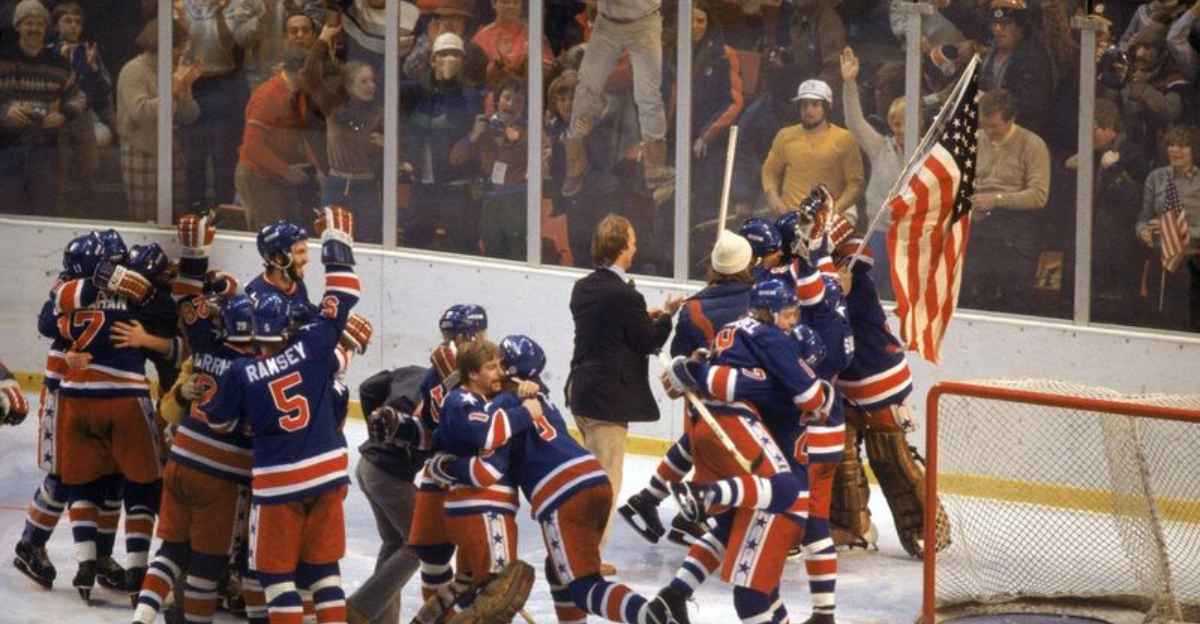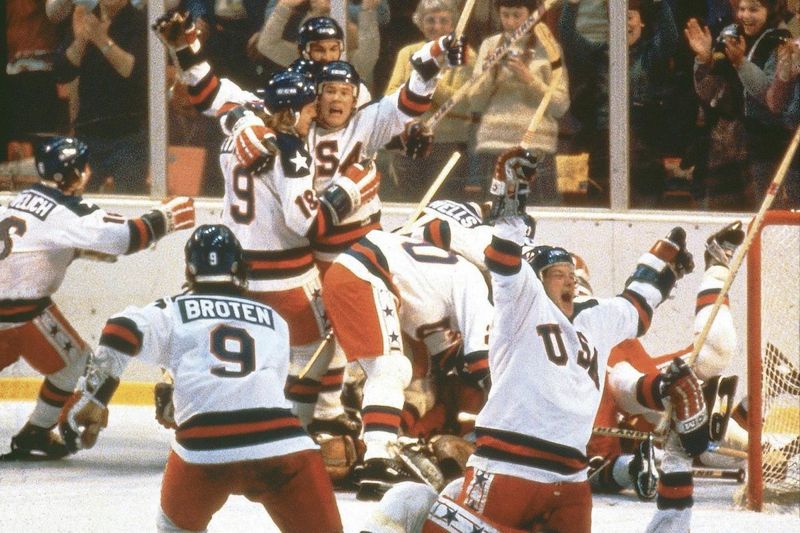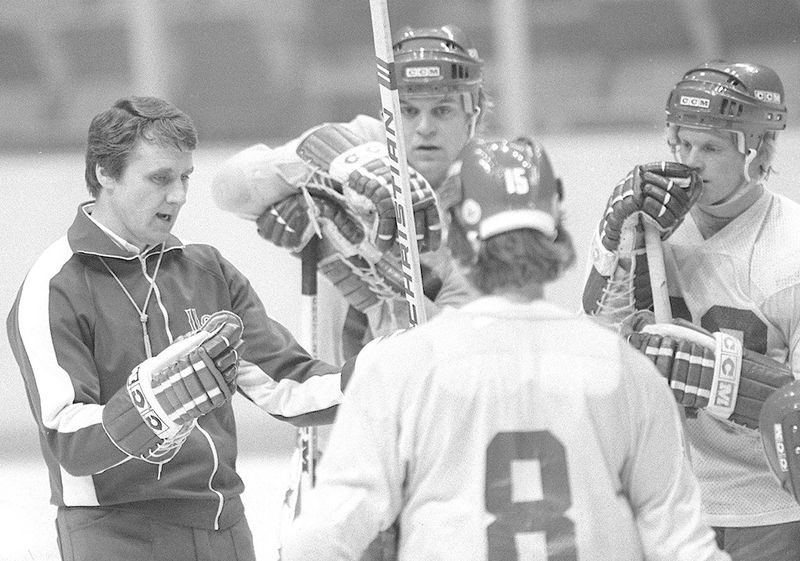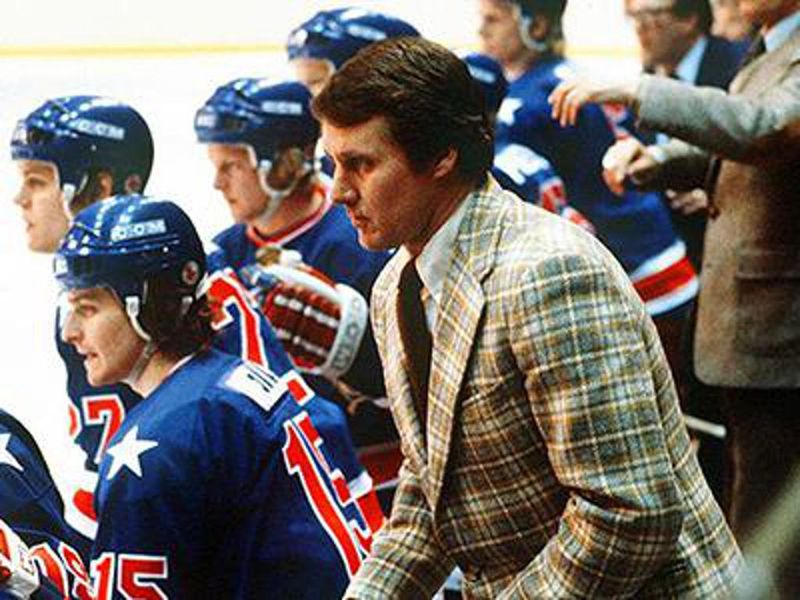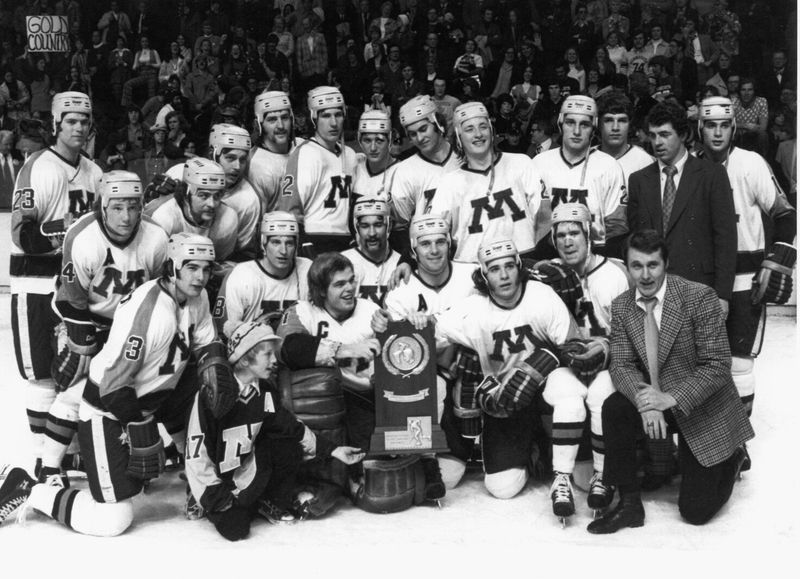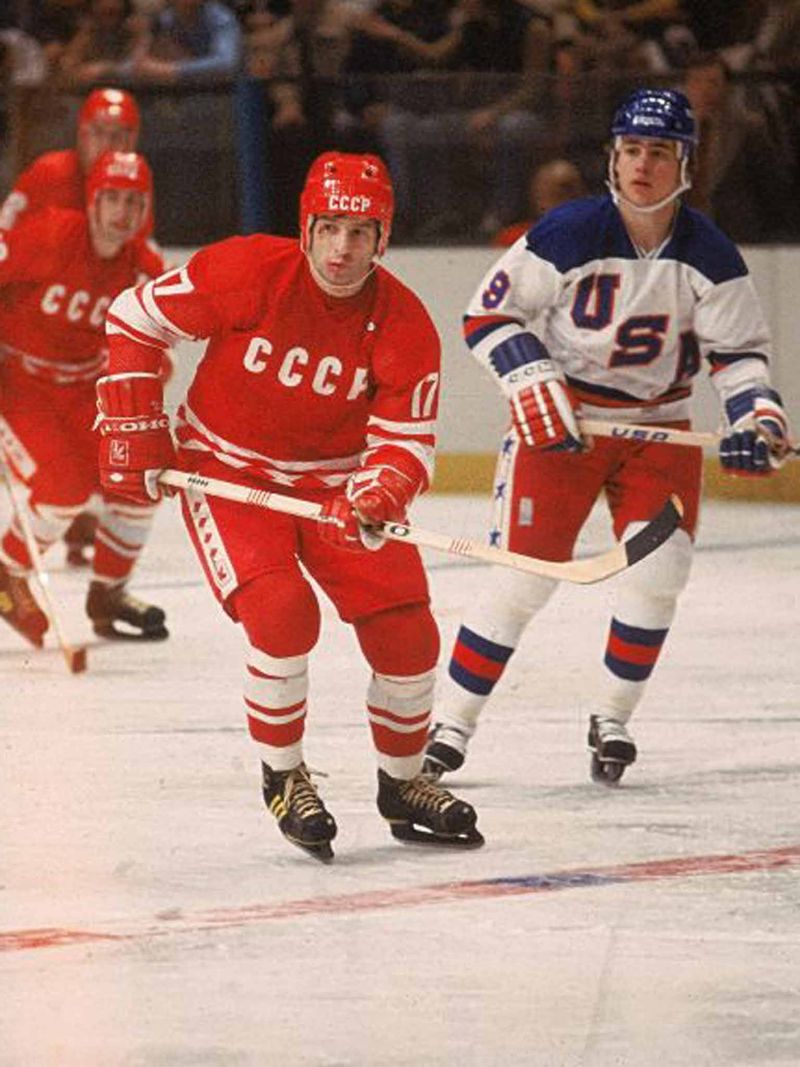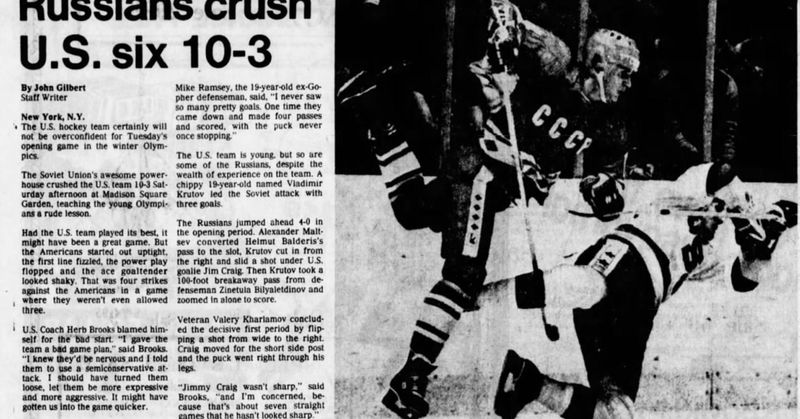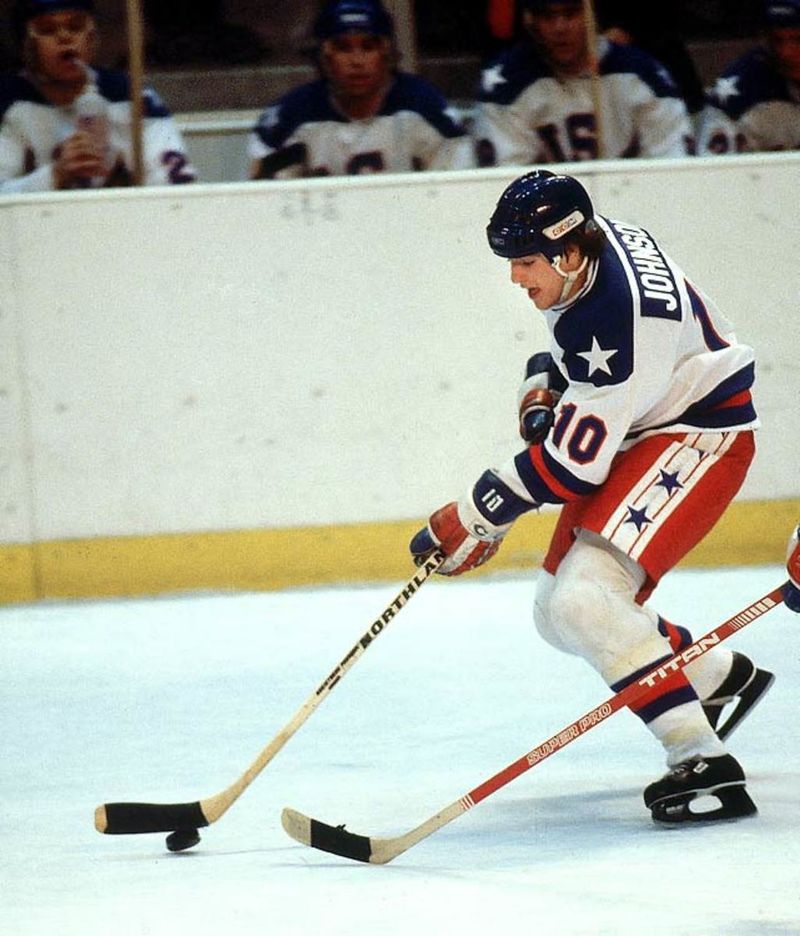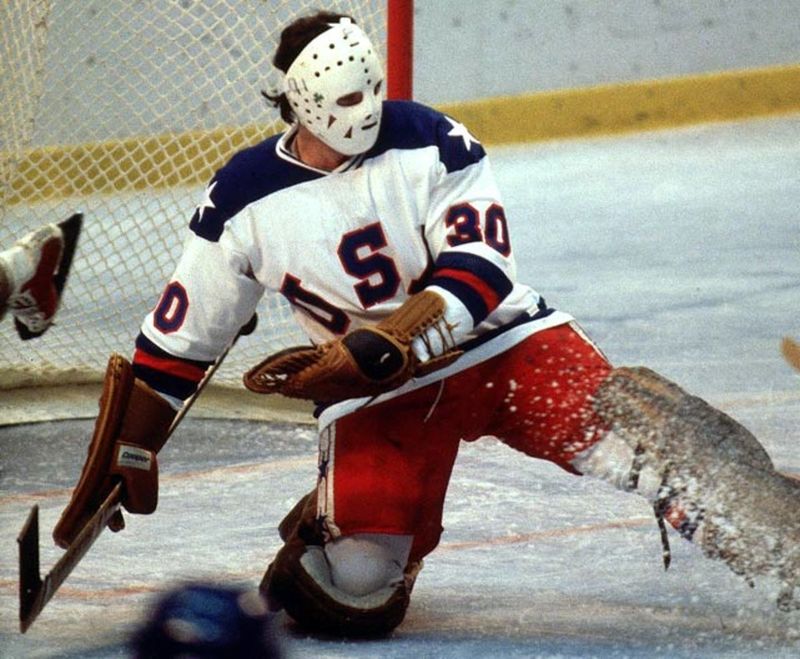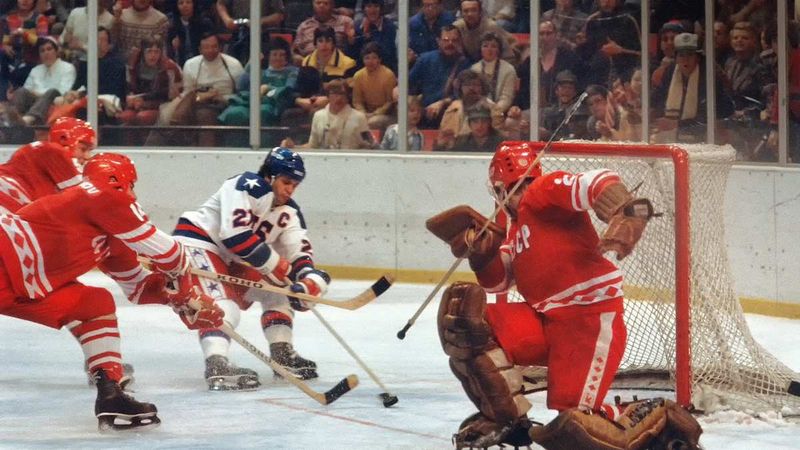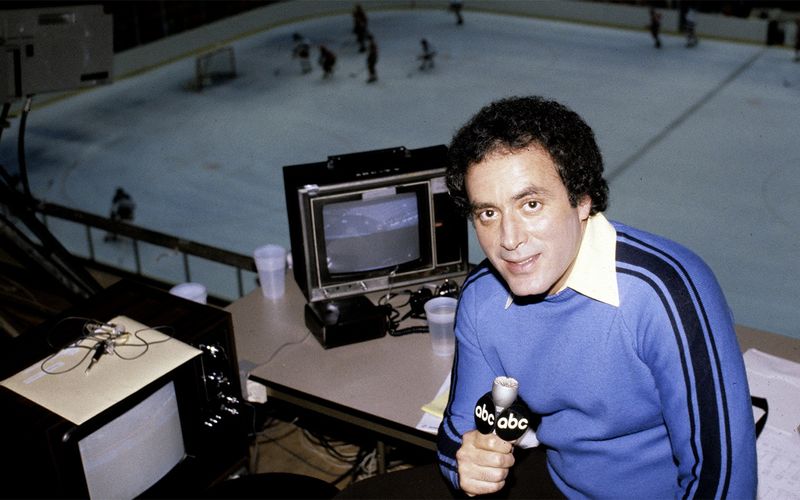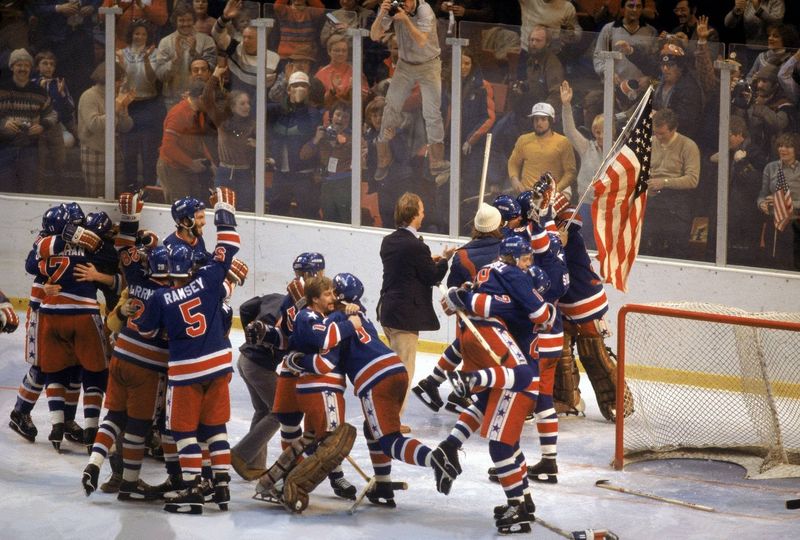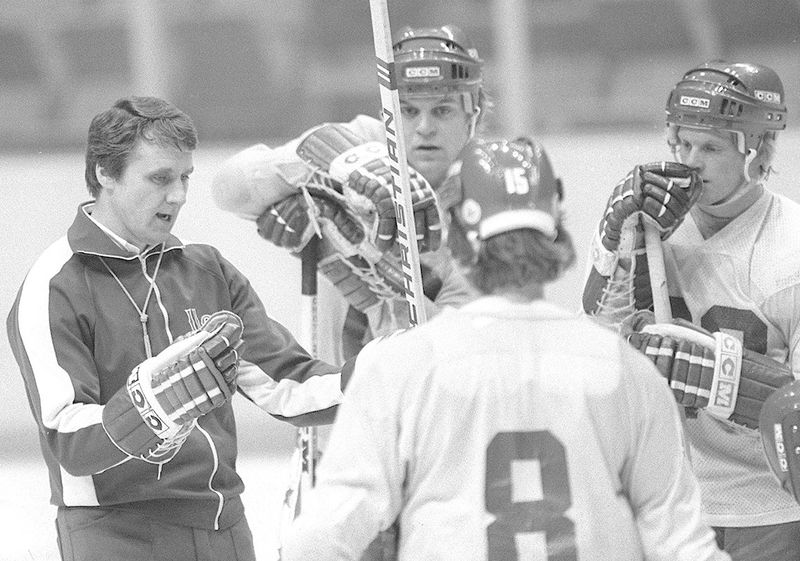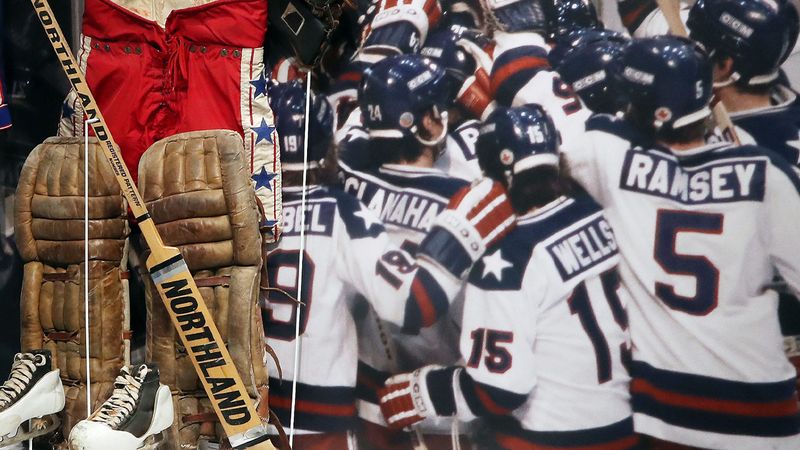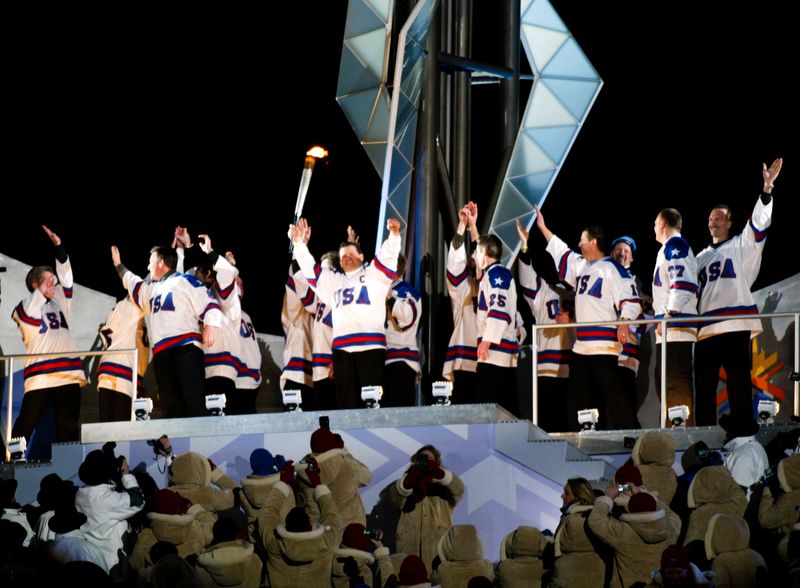In February 1980, a group of college kids accomplished the unthinkable on Olympic ice. The U.S. hockey team, composed mostly of amateurs, defeated the mighty Soviet Union in what became known as the ‘Miracle on Ice.’ This stunning victory happened during intense Cold War tensions, making it more than just a game—it became a symbol of American possibility against overwhelming odds.
1. Cold War Tensions Made It More Than Hockey
The Soviet invasion of Afghanistan and the Iranian hostage crisis had Americans desperate for something to celebrate. The hockey matchup transformed into a symbolic battle between political systems.
For many viewers, the amateur American players represented democratic values facing off against the Soviet machine. President Carter, dealing with plummeting approval ratings, embraced the team’s success as a rare bright spot during challenging times.
2. Herb Brooks’ Unconventional Coaching Methods
“I’m not here to be your friend” was Brooks’ philosophy. He deliberately antagonized players, creating a common enemy—himself—to forge team unity.
Brooks once made the team do sprints for an hour after a lackluster exhibition game, until players could barely stand. His psychological tactics included cutting the final player from the roster just hours before the Olympic deadline, keeping everyone on edge.
3. The Brutal ‘Herbies’ Training Regimen
After tying Norway in a pre-Olympic exhibition, Brooks kept players on the ice long after the arena lights dimmed. “Again,” he commanded repeatedly as exhausted players skated blue line to red line drills.
Forward Dave Silk later admitted, “We were doing Herbies in the dark, and guys were puking on the ice.” These punishing conditioning drills became the cornerstone of American endurance that would prove crucial against the Soviet machine.
4. The Minnesota Connection
The North Star State dominated the roster with twelve Minnesotans, including nine who played under Brooks at the University of Minnesota. This built-in chemistry proved invaluable during the Olympic tournament.
Minnesota’s hockey culture emphasized creativity and speed rather than the bruising style common elsewhere in American hockey. Brooks specifically sought this style, believing it essential to compete with European teams.
5. Soviet Players Were Military ‘Amateurs’
The Soviet squad maintained Olympic eligibility through a technicality—players held military or industrial jobs while training full-time. Captain Boris Mikhailov’s official job title? “Army Officer.”
In reality, they practiced year-round as a professional unit. Their annual training exceeded 1,200 hours compared to the Americans’ five months together.
Soviet players averaged 26 years old with extensive international experience, while American players averaged just 22.
6. The 10-3 Exhibition Defeat That Built Confidence
Just days before the Olympics, the Soviets humiliated Team USA at Madison Square Garden. Strangely, this crushing defeat became a psychological advantage.
Brooks used film from this game to identify Soviet weaknesses. “They’re vulnerable when forced to play defense,” he told his demoralized team.
Soviet coach Viktor Tikhonov later admitted his greatest mistake: the exhibition victory made his players overconfident while giving Americans crucial tactical insights.
7. Mark Johnson’s Game-Changing Buzzer Beater
With one second remaining in the first period, Soviet goaltender Vladislav Tretiak made a rare mistake. He gave up a long rebound that Johnson pounced on, tying the game 2-2.
This goal rattled Soviet coach Tikhonov into benching Tretiak—widely considered the world’s best goalie—for backup Vladimir Myshkin. Former Soviet players later called this panic move their coach’s fatal error.
8. Jim Craig’s Superhuman Goaltending
While mourning his mother who had recently died of cancer, Craig delivered the performance of a lifetime. He stopped 36 of 39 Soviet shots, many from point-blank range.
During the second period alone, the Soviets outshot Americans 12-2, yet couldn’t score. Craig’s teammates called him “a human fortress” as he withstood waves of Soviet attacks.
After the final buzzer, Craig memorably searched the stands for his father while draped in an American flag.
9. Captain Eruzione’s Perfect Moment
Mike Eruzione, whose name appropriately means “eruption” in Italian, wasn’t the team’s fastest or most skilled player. Yet his leadership made him captain.
With exactly 10 minutes remaining in the third period, Eruzione fired a 25-foot wrist shot through a defender’s legs. The puck slid past Myshkin’s outstretched pad, giving America a 4-3 lead they would never relinquish.
“I knew it was going in the second I shot it,” he later recalled.
10. Al Michaels’ Iconic Commentary
ABC assigned Al Michaels to hockey primarily because he had called exactly one previous game. As the final seconds ticked down, his spontaneous words became sports broadcasting legend.
“Five seconds left in the game… Do you believe in miracles? YES!” Michaels later admitted he had no idea what he would say until that moment.
The phrase perfectly captured America’s emotional response to witnessing the seemingly impossible unfold on ice.
11. The Forgotten Finland Game
Many forget the Soviet game wasn’t for the gold medal. Two days later, the Americans still needed to defeat Finland to secure the championship.
Trailing 2-1 entering the third period, Brooks delivered his most famous locker room speech: “If you lose this game, you’ll take it to your graves.”
The team responded with three unanswered goals, completing their improbable journey. Phil Verchota later said, “Beating Finland was actually harder—we had everything to lose.”
12. The Unplanned Flag Moment
The iconic image of Jim Craig skating with an American flag wasn’t planned. A fan tossed the flag onto the ice during celebrations.
Craig draped it over his shoulders while searching for his father in the stands. Photographer Heinz Kluetmeier captured the spontaneous moment that became a symbol of American pride during difficult times.
The original flag disappeared for decades before being recovered and eventually sold at auction for $86,000.
13. Herb Brooks’ Patriotic Response
When Vice President Walter Mondale asked how many players came from Minnesota, Brooks delivered an unforgettable response: “Nobody is from Minnesota, Mr. Vice President. We’re all from the United States.”
This quote perfectly captured how regional rivalries had transformed into national unity. Players from hockey hotbeds like Massachusetts, Minnesota, and Wisconsin had become a single American unit.
Brooks himself never watched the game in its entirety until 2002.
14. The Team’s Remarkable NHL Impact
Thirteen players from the Miracle team went on to NHL careers. Neal Broten became the first American-born player to score 100 points in an NHL season and later won a Stanley Cup.
Ken Morrow joined the New York Islanders immediately after the Olympics and won four consecutive Stanley Cups. Mike Ramsey played 1,070 NHL games over 18 seasons.
Their Olympic success helped open NHL doors for American players for generations to come.
15. The 2002 Olympic Torch Reunion
Twenty-two years after their miracle, the team reunited to light the Olympic cauldron at the 2002 Salt Lake City Winter Games. The emotional moment brought tears to millions of Americans who remembered their 1980 triumph.
Herb Brooks served as a consultant for the 2002 U.S. team that won silver. Tragically, Brooks died in a car accident in 2003, just a year after this poignant reunion.
